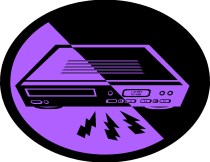
Everybody knows when you go to the show
You can’t take the kids along.
You’ve gotta read the paper and know the code
Of G, PG and R and X.
And you gotta know what the movie’s about
Before you even go.
Tex Ritter’s gone and Disney’s dead
And the screen is filled with sex.
— written by two of The Statler Brothers
That snippet of lyrics is from Whatever Happened To Randolph Scott?, a minor country hit in 1974 by The Statler Brothers. The song plays in full no less than three times during the 1976 film Drive-In, which I recorded off Antenna TV a little while ago. Hearing that refrain crystallized a thought that’s been bouncing around in me for a while – one of the major factors driving the decline of drive-in theaters has become a strong indirect reason for their resurgence.
a minor country hit in 1974 by The Statler Brothers. The song plays in full no less than three times during the 1976 film Drive-In, which I recorded off Antenna TV a little while ago. Hearing that refrain crystallized a thought that’s been bouncing around in me for a while – one of the major factors driving the decline of drive-in theaters has become a strong indirect reason for their resurgence.
When drive-ins’ popularity exploded in the 1950s, a patron could bring the whole family with an expectation that the film would be appropriate for all of them. Even gritty film noir movies were no worse than suggestive; any mature themes flew over the heads of the youngest viewers. More common were musicals, family-friendly dramas, and yes, lots of westerns with simple, basic plots and values.
In the 1960s, the movie studios recognized what they could offer that television couldn’t: mature content. Except for infrequent Disney offerings, movies became more complicated and adult, eventually leading to the creation of the MPAA ratings system. During this time, and into the 1970s, drive-ins continued to have a hard time procuring recent, popular movies, so they turned more often to exploitation movies, increasingly spattered with gore and sex. Drive-ins stopped being so family-friendly, but many of them hung on.
The VCR was arguably the single biggest killer of drive-in theaters. At worst, it was the final nail in the coffin after Daylight Saving Time, cable movie channels, and Hollywood’s shift away from family-friendly movies. By the early 1980s, most families could stay inside and watch a stack of rented movies any night, and the drive-in lost its appeal as quantity entertainment.
Then a funny thing happened. Families discovered that playing a tape of an animated movie or other kid-centric entertainment made their youngsters very happy. They rented more tapes, and movie stores purchased more tapes. As studios began to recognize the huge market in animated VHS tapes, and later DVDs, they started making more animated films with an eye toward long-term profit.
That’s where we are today. Drive-ins can offer family-friendly animated movies essentially every week of the year, and families are responding by filling their lots again. Since drive-in theater economics hinge on the concession stand, getting a horde of hungry kids is a great way to improve profits. For the drive-ins that survive the digital conversion, the future looks better than ever. And the biggest reason so many drive-ins died in the 1980s is now the driving force behind the content that brings in all those families.



